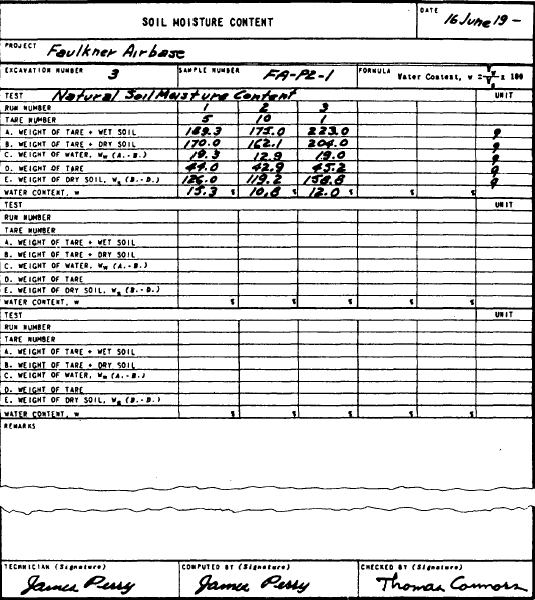|
PROCEDURE. Before
beginning the tests, weigh each of
the moisture boxes and record the weight
by can number. Record this weight as tare weight
(weight that allows for a deduction of the can).
Then fill each can with a sample and weigh the
can (with lid on) and contents. Remove the lid and place the can, contents, and
lid in the oven or pan to dry. In an electric oven,
maintain the temperature between 212F and
230F (105C 10C); dry the sample for at
least 8 hreven longer for clay or silt. Then weigh
the dry can, contents, and lid.
Record the results on a form like the one shown
in figure 15-27. In the example shown in

Figure 15-27.-Data sheet for
moisture content tests.
figure 15-27, three tests (called runs) were made, using cans
numbered 5, 10, and 1. Online D (weight of tare), record
the weight of each can. Note that although the cans
are identical in appearance, they vary slightly in weight.
Online A (weight of tare and wet soil), record the
weight of each can with wet contents. On line B (weight
of tare and dry soil), record the weight of each can
with contents after drying.
Online C, Ww (weight of water in the soil sample) was
obtained by subtracting (B) from (A). On line E, Ws
(weight of dry soil) was obtained by subtracting (D) from
(B).
The line labeled "water content, w," shows the results
obtained by substituting the known values in the following
formula:

The average of these three values, or 12.7 percent, is the value
of w (percentage of moisture content) for the sample.
|


|

